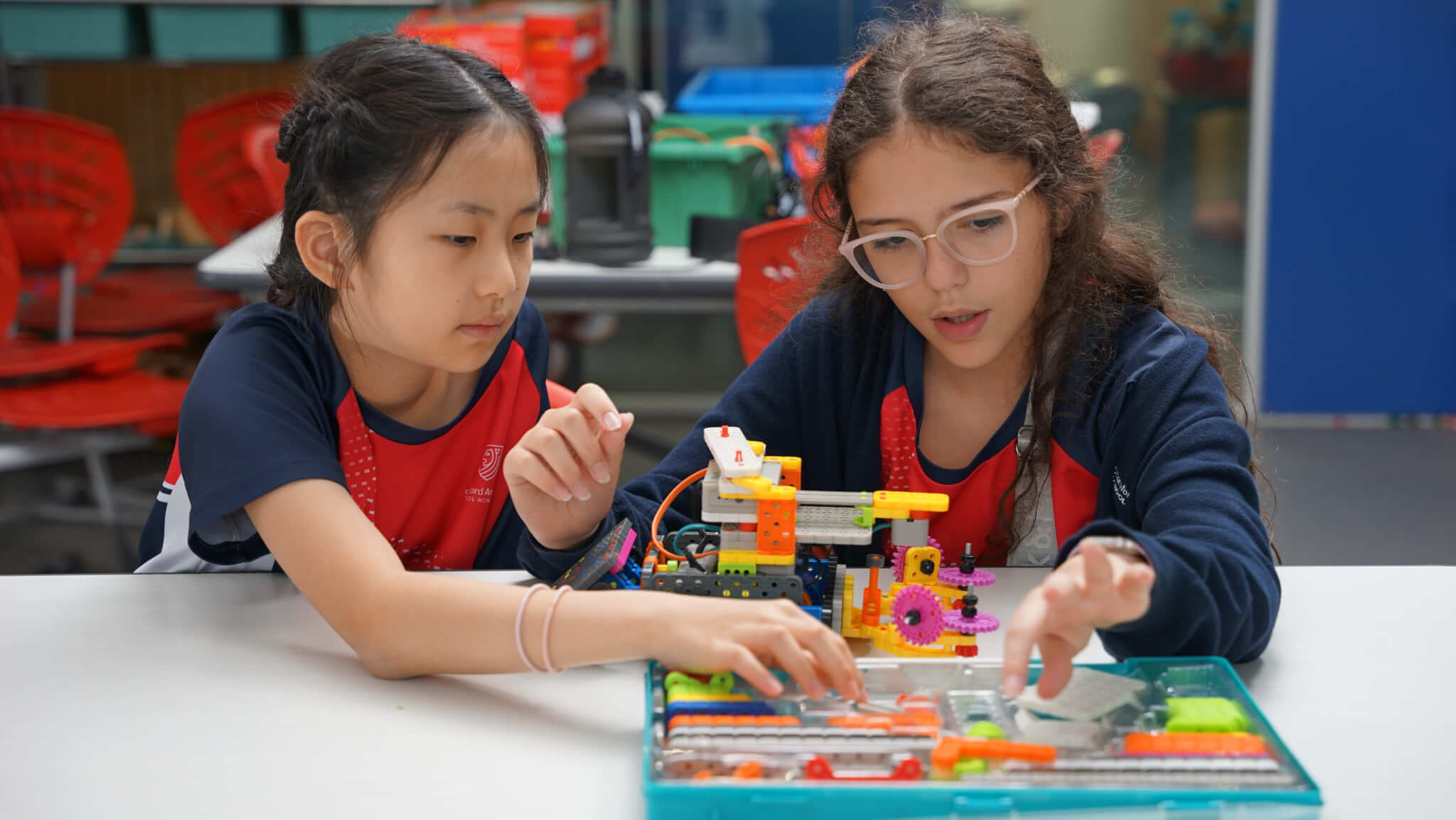Education must evolve to meet new demands in a world that increasingly values creativity, collaboration, and innovation. That is where STEAM comes in. Standing for Science, Technology, Engineering, Arts, and Mathematics, STEAM education represents a shift from traditional subject-by-subject learning to a more holistic and interdisciplinary model. It blends analytical thinking with creative expression to equip students with the diverse skills they need to thrive in an unpredictable future. STEAM is a powerful approach to learning that empowers students to solve complex problems, think critically, and lead with empathy and imagination.
Moving Beyond STEM: The Rise of STEAM
In school, students are often tasked with designing a sustainable water filtration system for a community in need. In this scenario, they will need science to understand purification, technology to test designs, engineering to build, and math to measure and analyze. Yet, the creative approach, design thinking, and user-focused presentation make their work impactful. This is what STEAM looks like in real life.
Originally, STEM education focused on four core areas: science, technology, engineering, and mathematics. It aimed to prepare students for careers in technical and scientific fields. Over time, educators noticed a missing link—the arts. Creativity, design, and expression all play crucial roles in innovation. This is what STEAM is – a more integrated, well-rounded approach to learning that includes the arts.
Using insights from reputable sources such as Arts Integration, Harrow Hong Kong and Big Bang Academy Hong Kong, we explain what is STEAM education and why is it important and how it helps shape students who are not just academically capable, but also curious, creative, and ready for the challenges of tomorrow.
Defining STEAM: Integrating the Arts with STEM
STEAM is an approach that brings together science, technology, engineering, art, and math to help students learn with depth, creativity, and purpose. STEAM education helps students think critically, work collaboratively, and communicate clearly. These are skills they will need for the future.
A. Deconstructing STEM:
STEM refers to the combined teaching of science, technology, engineering, and math. These subjects build a foundation for logical reasoning, technical understanding, and innovation. STEM education emphasizes problem-solving and the ability to apply knowledge to real-world challenges. STEM fosters skills like data analysis, design testing, and digital literacy. But, while it strengthens technical abilities, it does not always encourage students to think outside the box. This is where the “A” in STEAM comes in.
B. The “A” in STEAM: The Role of the Arts
In STEAM, the “A” stands for the arts—visual arts, music, drama, media arts, and design. These subjects encourage students to develop creativity, self-expression, and an appreciation for aesthetics. More than decoration, the arts bring emotional intelligence, empathy, and storytelling into education. The arts push students to think critically, challenge assumptions, and find new ways to communicate complex ideas. This kind of thinking adds depth and originality to science and engineering work.
C. The Synergy of STEAM
STEAM is not about adding a painting to a math lesson. It is about meaningful integration. When students design a solar-powered car, they are using engineering, physics, and math—but if they also consider how it looks, how users interact with it, and how to pitch it to a panel, they’re engaging with art and design. STEAM encourages a type of thinking that blends logic with imagination. It builds students who can both analyze and create.
Why STEAM Is Important in Education
A. Fostering Creativity and Innovation
The arts help students generate fresh ideas, develop unique solutions, and push boundaries. Creativity drives invention, from designing user-friendly apps to reimagining healthcare tools. In STEAM education, this mindset is encouraged and practiced regularly. Creativity is what helps translate science into real-life solutions.
B. Enhancing Problem-Solving Skills
Artists solve problems visually, spatially, and emotionally. These perspectives are valuable in science and tech fields. STEAM helps students approach challenges from multiple angles. This can lead to better outcomes with solutions that work and make sense to people.
C. Promoting Critical Thinking and Analysis
Students in art classes are constantly making choices about materials, themes, or messaging. This builds habits of observation, analysis, and evaluation. Arts Integration points out that these are the same thinking patterns needed to interpret data or assess engineering designs. STEAM connects those dots.
D. Improving Communication and Collaboration
Science does not happen in isolation. Professionals in any technical field must be able to share their work and collaborate with others. The arts develop strong visual and verbal communication skills. Through group projects, performances, and critiques, students learn how to express ideas clearly and listen actively. These are key traits in any team-based environment.
E. Increasing Engagement and Making Learning Relevant
One of the biggest advantages of STEAM is that it appeals to a wide range of learners. Students who might not feel drawn to math may engage more fully when it is paired with music. Artistic expression gives context to abstract ideas and can help turn passive learners into active participants. STEAM allows students to see the purpose behind their studies. It makes the school feel more connected to real life, and that boosts motivation.
F. Preparing Students for Future Careers
Jobs are changing. Fields like robotics, biomedical design, and climate technology need people who can cross disciplines, people who understand code and also how to explain it. Companies value creative thinkers just as much as technical experts. A STEAM approach gives students an edge. Students who are fluent in both logic and creativity are more adaptable. They are better prepared for jobs that do not exist yet and more likely to create meaningful work in any field.
Examples of STEAM Education in Action
STEAM is not just a theory—it is being applied in schools around the world.
Here are some examples of what it looks like:
- Robot design projects where students plan functionality and consider how the robot looks and interacts with users.
- Using digital art tools to visualize things like space exploration or climate models.
- Writing and performing plays that explore historical discoveries in science.
- Studying rhythm and patterns in music to better understand mathematical concepts.
- Creating environmentally-friendly packaging that is both functional and visually appealing.
At Stamford American School Hong Kong, STEAM principles are integrated into the curriculum from the early years. Students are encouraged to explore connections between subjects, develop their own ideas, and collaborate on interdisciplinary projects. This helps them develop a strong academic foundation and a mindset of innovation.
Addressing Potential Misconceptions about STEAM
It is easy to think STEAM just means adding art to science class, but it is much more than that. STEAM is not about splitting time between subjects, it is about blending them meaningfully. A well-executed STEAM activity involves authentic links, where each subject enriches the others.
Some worry that including art might weaken the focus on STEM. Research shows that creativity improves performance in all subjects. STEAM does not reduce academic rigor, it adds to it by deepening engagement and developing broader thinking skills.
Conclusion: Embracing the Holistic Power of STEAM
STEAM prepares learners to be problem solvers and creators. It does not just teach students what to learn. It teaches them how to think. In today’s world, that is not just helpful but also essential.
Looking to learn more about what is STEAM education and why is it important? Visit Stamford American School Hong Kong to see how we make STEAM a meaningful part of every student’s education.





